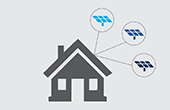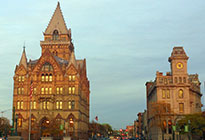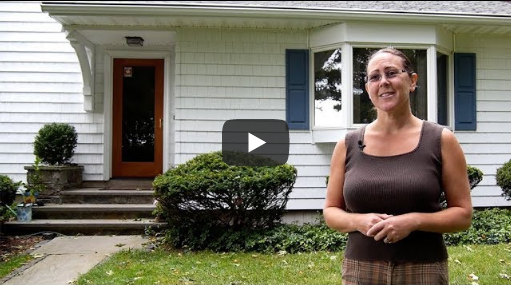History of solar policy in New York
While New York would not seem like an ideal region for solar as compared to sunnier regions elsewhere in the country, the Empire State has crafted a collection of policies and incentives that have resulted in one of the strongest solar markets in the nation. As of 2018, New York ranks 10th in SEIA’s national rankings with a total installed solar electricity capacity of over 1,600 megawatts (MW). Even more notable is that in five years, SEIA projects that New York will rank 6th, thus hinting at the enormous potential there is for future development in the state.
The first solar policy enacted in the Empire state was the Solar Property Tax Exemption in 1977, which relieved homeowners of the additional property taxes that come with a solar installation. New York revised this tax exemption in 1991 to allow local governments to opt out of this exemption if they wished, as well as to place an expiration date of 2025 for people to apply into the program. Another set of early solar policies in New York were Solar Easements & Rights Laws, which protect a homeowner’s right to install and generate electricity with solar panels without any external restrictions.
The next round of major solar policies were enacted in a group during the late 1990s. The first of these was the Systems Benefits Charge in 1996, which uses a non-bypassable charge on the state’s ratepayers to finance a public benefits fund that invests in energy efficiency, renewable energy, and low-income assistance initiatives. Today the fund is actively managed by NYSERDA and has over the years invested a sizeable $2.48 billion from 1998 to 2016 for the purpose of trying to obtain a competitive, clean energy market.
In 1997, New York approved the Residential Solar Tax Credit, which has since remained an essential financial incentive for New Yorkers. The policy reduces homeowner’s state tax payments by up to $5,000 or up to 25 percent off the total solar energy expenses. As of a recent 2012 amendment, residents don’t even need to purchase an installation to apply for the credit, as they can claim it through a solar lease or Power Purchase Agreement (PPA), making solar energy much more attractive throughout the state.
The last implemented solar policy during this time period was net metering, which also passed in 1997. Throughout the nation, net metering programs have been crucial for the solar energy industry by allowing residents to store surplus net energy in the electric grid and receive compensation for it on their energy bill. In New York, utility companies are required to provide net metering services for residential systems up to 25 kW and generally credit net excess generation (NEG) at the retail rate, although excess generation reconciled annually is compensated by the lower avoided cost rate. Fortunately, a 2011 provision grants ratepayers a one-time selection on when the pay period ends in order to avoid cashing out at an unfavorable time, like when there is a large amount of NEG being collected at a lower rate.
While all of these policies have been crucial to the development of solar energy in New York, the state’s Renewable Portfolio Standard (RPS) program has been its most influential driver of growth to this point. Importantly, state energy requirements have been probably the most significant policy for clean energy development across the nation. After being established in 2004, New York’s RPS originally required utilities to supply 25 percent of their retail electricity sales from renewable energy by 2013. Policymakers soon realized they would be able to meet this goal and increased the required levels in 2010 to be 30 percent by 2015. The state achieved the revised goal as well, prompting New York to implement an entirely new RPS program in 2016 known as the Clean Energy Standard mandating 50 percent of its electricity to be sourced by renewables by 2030.
Part of the reason that New York has been so successful in achieving its RPS goals is because of the additional financial incentives they have added since 2004. For example, in 2005 the state decided to alleviate the sales and installation taxes for purchasing solar systems through the Solar Sales Tax Exemption. Additionally, policymakers instituted the NY-Sun PV Incentive Program in 2010, which provides through the Megawatt Block Initiative direct and generous dollars per watt ($/W) rebate for both residential and commercial systems. For residential systems, rebates vary according to the utility, but some are as high as $0.40/W, which is one of the best offerings in the nation. Furthermore, NY-Sun provides an Affordable Solar option for those who are eligible and offers double the standard incentive amount for systems up to 6 kilowatts (kW).














